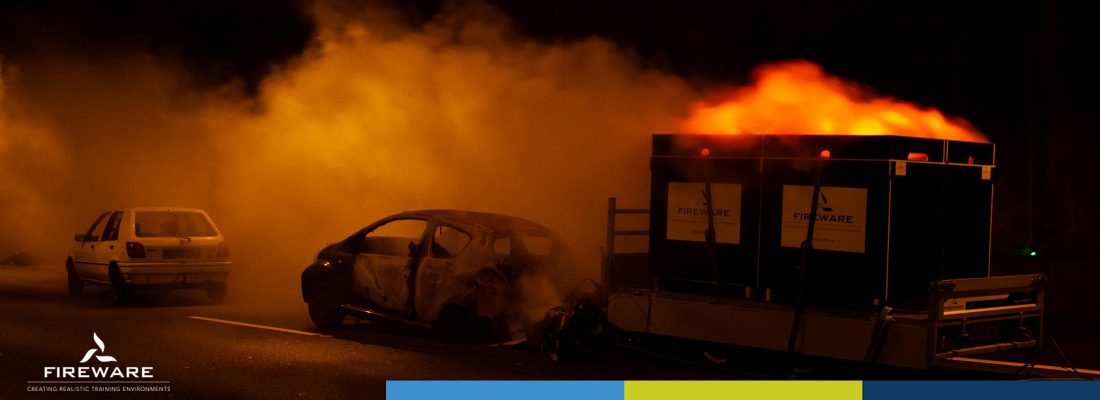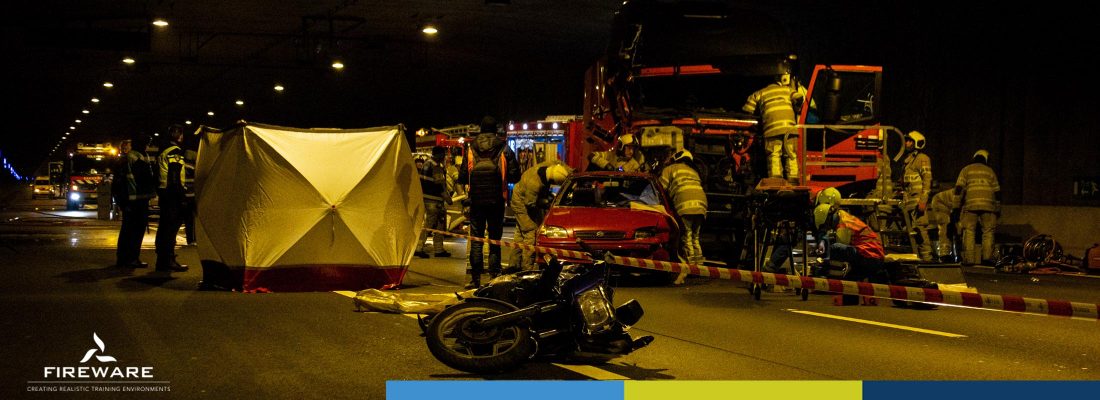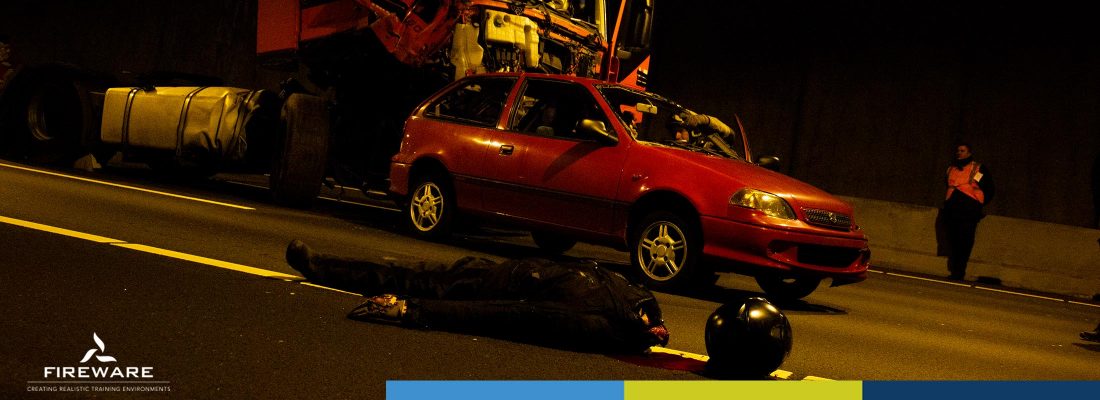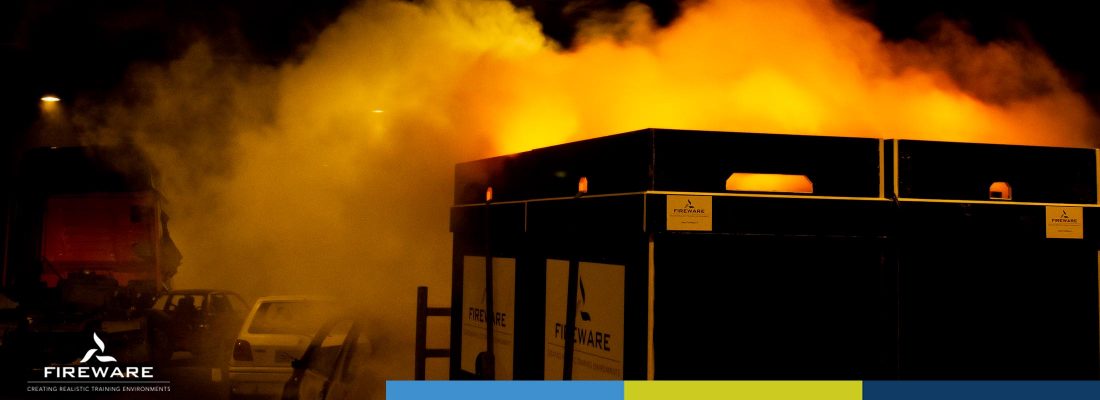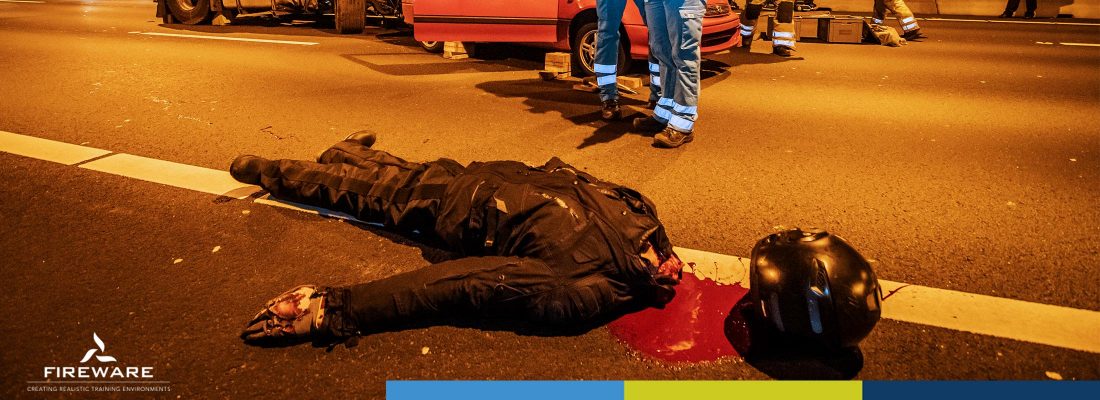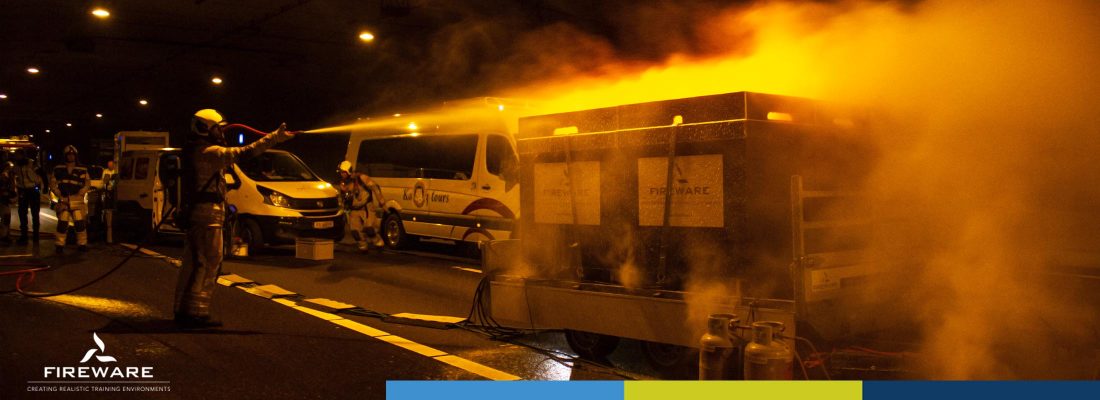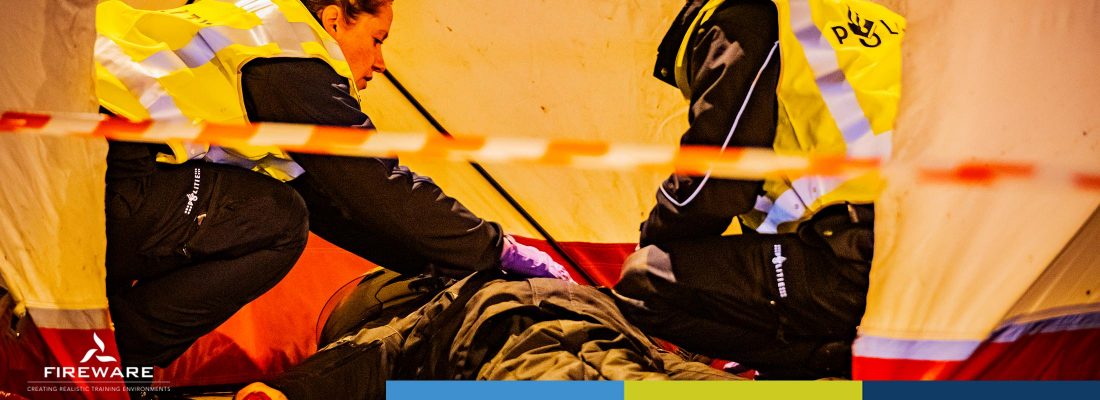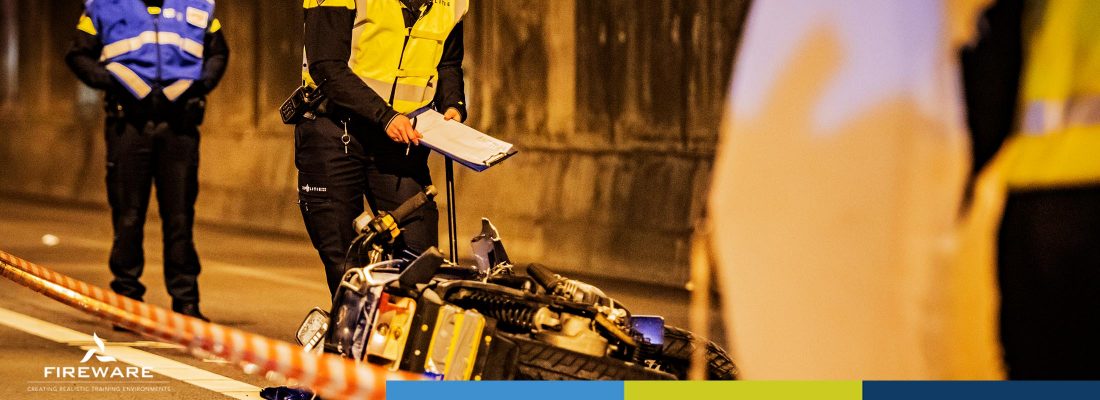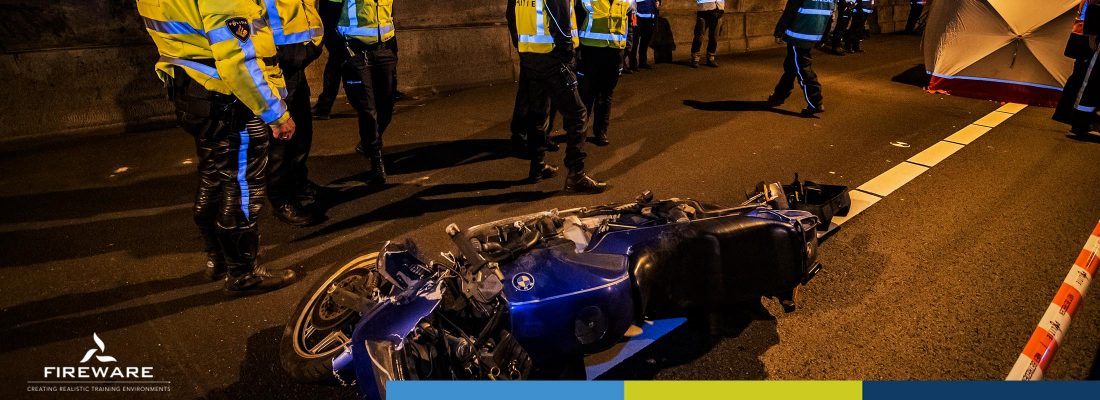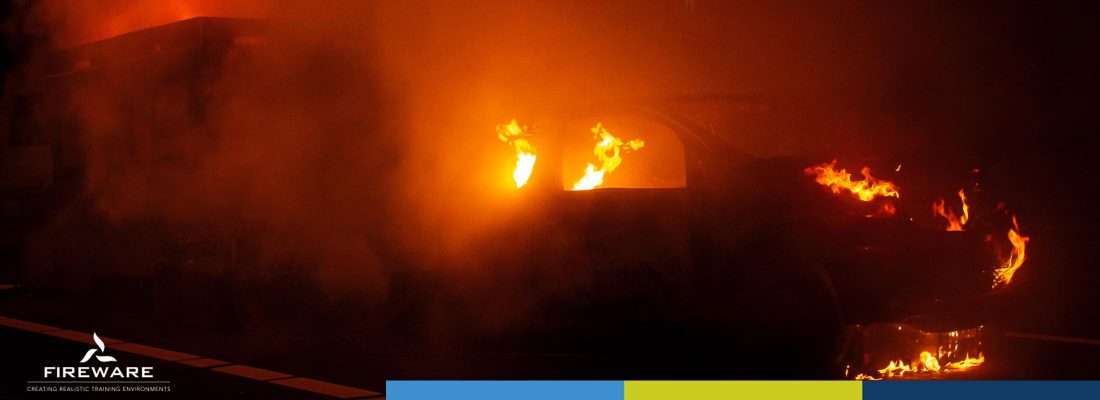Photos: Koen Laureij Fotografie & FireWare.
During the night of 23 to 24 March, a large multidisciplinary calamity training was organized in the Leidsche Rijntunnel on the A2. These kinds of multidisciplinary trainings are extremely important for first responders, Rijkswaterstaat and the tunnel operator in order to experience how quickly a tunnel can fill up with smoke in case of a tunnel fire. The vision of the first responders is substantially hindered, thus presenting them with a huge challenge!
Realistic training every four years
The Dutch rules and regulations pertaining to tunnel maintenance require a calamity training that must be organized every four years. This tunnel training involved the supporting participation of no fewer than 140 people and around 80 first responders participating in the actual training. It was by far the largest multidisciplinary training ever organized in the history of the Leidsche Rijntunnel, people-wise. It has been an amazing experience to take part in a training on this level and we were astonished by the professional attitude of all parties involved. The unbridled enthusiasm of all first responders, actors, side-kicks and LOTUS victims have contributed to the necessary realistic level of this training. In addition, companies like Collewijn Berging and Engie have allowed us to focus in full on the execution of our specialist activities. We also want to complement the Police of Midden-Nederland, the municipality of Utrecht and the Utrecht Safety Region for their contribution and professionalism. The preparatory phase of the training was excellent, and we benefitted from a well channelled information and organisation.
All-in all, we are looking back on an incredible training, for which we wish to express special thanks to Piet Peeters and Patrick Elferink from Rijkswaterstaat Midden-Nederland. What a great assignment and what a marvellous collaboration!
Leidsche Rijntunnel A2
The calamity training was staged inside the two eastern tunnel tubes of the Leidsche Rijntunnel A2. These are 1,650 meters in length. Rijkswaterstaat, the Utrecht Safety Region, the municipality of Utrecht and the police all participated in the training. The training focused om the operational methods and procedures that are in place when a tunnel incident occurs. The results of the training will be evaluated to adjust and improve the calamity plans and procedures if and where necessary.
Photos: Koen Laureij Fotografie & FireWare.
Spectacular scenario for all parties involved
Since the training was organized during night hours to prevent inconveniences for the public, this asked for exceptional nocturnal input from all participants. Therefore, it was very important that everyone involved would benefit from the training and be able to reach their goals, both on a multidisciplinary and a monodisciplinary level. In addition, the training should not exceed a GRIP 1 level.
In order to comply with all of these conditions, we built a spectacular scenario. A driver of a passenger car blacks out behind the wheel and loses control of his vehicle. He smacks into the tunnel wall, causing his car to catch fire. The driver dies on the spot. A motor cyclist following directly behind the car didn’t foresee these events and fails to react in time. He hits the concrete and is decapitated. This scenario presented a challenge for both the traffic accident analysis services and the forensic teams.
Behind the unfortunate accident, there is a pile-up of various passenger cars and a truck. Several drivers got stuck inside their vehicle. The first responders also find themselves confronted with a passenger car without any occupants.
Under pressure
While driving to the incident, the first responders’ job is already hindered by tricky situations. There is a van with eight members of the local shuffleboard club that got stuck in traffic. They are likely to be late for their flight to the shuffleboard world championship and they keep demanding the first responders’ attention. Also, an official diplomate’s car of a foreign federation got caught in the accident. The ambassador who is inside the car refuses to get out for safety reasons. Her bodyguard demands her safe escort from the tunnel within the hour, otherwise an extraction team from the embassy will be forced to act. These elements of the scenario really pump up the pressure for the various first responders.
Photos: Koen Laureij Fotografie & FireWare.
Enormous smoke output
One of the most important basic conditions for this training was to create an amount of smoke that realistically simulates the smoke output of an actual vehicle fire. Moreover, the smoke output needed to remain in place throughout the entire exercise, without having to warm up the smoke generators. Core computers were used to produce up to 60,000m3 of smoke output per minute. This allowed to adjust the smoke level flawlessly in every stage of the incident.
Traffic and the surroundings were informed by means of drips. A continuous monitoring made sure that the smoke output did not entail any inconveniences nor unsafe situations for the immediate traffic and surroundings.
In order to be able to stage this incident inside the long tunnels, our staging specialists hit the road with a well-equipped van. The technical service had prepared four smoke containers that consisted of no less than fourteen Stratus smoke generators and a total of twelve Firespots. By using vertical smoke injection, we were able to create a realistic smoke layer. The smoke containers produced an enormous continuous smoke layer. This allowed to stage the incident in a very realistic manner in a very limited timeframe.
Vesta fire trainers were used to stage the vehicle fires. The deceased victim who was inside the vehicle was simulated by using a manikin, as was the decapitated motor cyclist.
The entire training session was monitored from a core computer inside a mobile production unit. This allowed to control the flames and smoke output in a highly accurate and dynamic manner. This unit was also used for the video production of the incident. This footage will be used to evaluate the incident.
The maintenance contractor (Engie) made sure the scenario was cleared by 4 in the morning after which the tunnel could be re-opened for traffic. The catering service of Rooijen Catering offered food and drinks and made sure that all participants went home on a full stomach.
Multidisciplinary training, even when all victims have been put to safety
The true challenge in these kinds of large-scaled multidisciplinary training situations lies in keeping productive all participating responders. And we certainly succeeded to do so in this exercise!
The exercise didn’t end with the rescue and recovery of all victims. Another essential part of this training situation was the re-opening the tunnel for all traffic. It was very special to experience this. All too often, the signal “end of training” is given after the first responders have completed their work. However, the next phase should certainly not be underestimated!
Check out our video
View the tunnel exercise in 360 degrees
Using a mobile phone? Click on the video titles to open the videos in your YouTube application.
Parties involved
This tunnel exercise could not have been organized without the close collaboration between all parties involved. We would like to give or special thanks to all of them:


